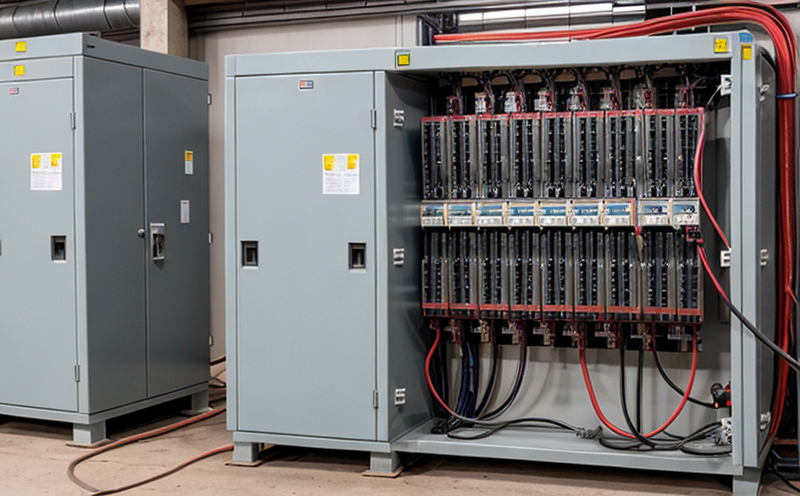IEC 60076-7 Loading Capability Testing of Power Transformers
The IEC 60076-7 standard provides a comprehensive framework for loading capability testing of power transformers. This service ensures that the transformer can operate efficiently and safely under various loading conditions, which is critical in the design, manufacturing, and maintenance phases of power transmission infrastructure.
Understanding the loading capability of a transformer is essential because it determines how much current or voltage a transformer can carry without exceeding its design limits. This test helps ensure that transformers are not only reliable but also cost-effective to operate over their lifetimes. In the context of Power & Utilities Testing, this service plays a crucial role in safeguarding grid stability and minimizing downtime.
The loading capability test assesses the transformer's ability to handle peak loads without degrading its performance or causing failure. This is particularly important in regions with fluctuating demand patterns where transformers must perform under varying conditions. The test parameters include current, voltage, temperature rise, and insulation life, among others.
For accurate testing, the specimen preparation involves ensuring that the transformer is clean, free from any foreign materials or contaminants. The equipment used includes high-precision measurement tools capable of recording detailed data points during the test. Once the test parameters are set, the transformer is subjected to a series of loading conditions that simulate real-world scenarios.
The acceptance criteria for this service are stringent and align with international standards such as IEC 60076-7. These criteria ensure that transformers meet the required performance levels under specified loadings. Compliance officers and quality managers can rely on these tests to verify that their transformers are up to code before deployment.
The data collected from this test is crucial for R&D engineers in refining transformer designs. By understanding how different loading conditions affect performance, they can optimize future models for better efficiency and reliability. For procurement teams, knowing the results of such tests helps in selecting high-quality components that meet stringent standards.
In summary, IEC 60076-7 Loading Capability Testing is a vital service in the Power & Utilities sector. It ensures that transformers are safe, efficient, and capable of handling peak loads without compromising their integrity or operational life. This testing aligns with international standards, providing confidence to stakeholders involved in the power transmission industry.
Applied Standards
| Standard | Description |
|---|---|
| IEC 60076-7 | Defines the loading capability testing procedures for power transformers. |
| ASTM D1149 | Supports material properties relevant to transformer insulation systems. |
| EN 50283 | Incorporates European Union regulations on transformer performance. |
| Parameter | Description | Equipment |
|---|---|---|
| Current | Total current flowing through the transformer during loading tests. | Ammeters, Current Transformers |
| Voltage | The voltage applied to the transformer for testing. | Voltmeters, Voltage Regulators |
| Temperature Rise | Maximum permissible rise in temperature during loading tests. | Infrared Cameras, Thermocouples |
| Insulation Life | Duration the insulation can withstand specified loads without failure. | Dielectric Test Setups |
Benefits
The benefits of IEC 60076-7 Loading Capability Testing are multifaceted, offering significant advantages to power utilities and industrial customers. Firstly, this testing ensures that transformers operate at optimal capacity without any risk of failure due to overload. This leads to enhanced reliability and uptime, reducing the likelihood of service disruptions during peak demand periods.
Secondly, compliance with international standards like IEC 60076-7 enhances the reputation of power utilities in the global market. It demonstrates a commitment to high-quality standards and safety, which is crucial for attracting investment and maintaining regulatory approval.
For R&D engineers, this service provides valuable insights into transformer performance under various loading conditions. This data can be used to improve design iterations and enhance future products' efficiency and longevity. For procurement teams, knowing the results of such tests helps in selecting suppliers who adhere to stringent quality standards.
The testing also supports environmental sustainability by ensuring that transformers are not only efficient but also energy-efficient. By reducing waste and minimizing downtime, utilities can contribute positively to their carbon footprint reduction efforts.
In conclusion, IEC 60076-7 Loading Capability Testing is a cornerstone of the power & utilities sector, offering robust benefits in terms of reliability, reputation, innovation, and sustainability. It is an indispensable service for any organization involved in the design, manufacturing, or maintenance of transformers.
International Acceptance and Recognition
The IEC 60076-7 standard enjoys widespread recognition across the globe due to its stringent requirements and comprehensive approach. Utilities around the world adhere to this standard because it ensures that transformers meet the highest international safety and performance criteria.
In Europe, compliance with EN 50283 further emphasizes the commitment to meeting European regulatory standards for transformer performance. This standard aligns with IEC 60076-7, ensuring a harmonized approach to testing across different regions. The standard is widely accepted in countries like Germany, France, and the UK, where stringent quality control measures are enforced.
In North America, the acceptance of IEC 60076-7 is equally significant. Utilities such as those managed by the North American Electric Reliability Corporation (NERC) rely on this standard to ensure that transformers meet North American safety and performance requirements. This standardization is crucial for maintaining grid reliability and ensuring seamless integration across national borders.
The acceptance of IEC 60076-7 extends beyond geographical boundaries, with many international organizations endorsing its use. For instance, the International Electrotechnical Commission (IEC) itself provides a framework that supports global consistency in testing procedures. This ensures that transformers are tested and certified to the same rigorous standards regardless of their intended market or region.
In summary, IEC 60076-7 Loading Capability Testing is internationally recognized for its role in ensuring transformer reliability and performance. Its acceptance across different regions underscores the importance of adhering to high-quality standards in the power & utilities sector.





